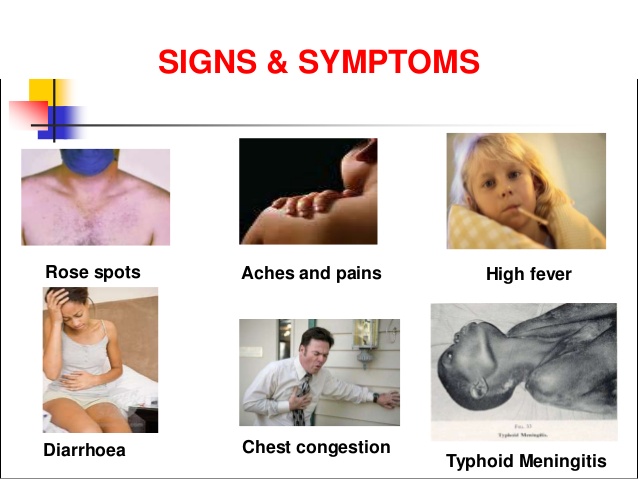Typhoid fever is a serious bacterial infection that easily spreads through contaminated water and food. Along with high fever, it can cause abdominal pains headache, and loss of appetite.
With treatment, most people make a full recovery. But untreated typhoid can lead to life-threatening complications.
WHAT ARE THE SYMPTOMS OF TYPHOID?

It can take a week or two after infection for symptoms to appear. Some of these symptoms
- high fever
- weakness
- stomach pain
- headache
- poor appetite
- rash
- fatigue
- confusion
- constipation, diarrhea
Serious complications are rare, but can include intestinal bleeding or perforations in the intestine. This can lead to a life-threatening bloodstream infection (sepsis). Symptoms include nausea, vomiting, and severe abdominal pain.
Other complications are:
- pneumonia
- kidney or bladder infection
- pancreatitis
- myocarditis
- endocarditis
- meningitis
- delirium, hallucinations, paranoid psychosis
If you have any of these symptoms, tell your doctor about recent travels outside the country.
WHAT ARE THE CAUSES AND RISK FACTORS?
Typhoid is caused by bacteria called Salmonella typhi (S. typhi). It’s not the same bacterium that causes the foodborne illness Salmonella.
Its main method of transmission is the oral-fecal route, generally spreading in contaminated water or food. It can also be passed through direct contact with an infected person.
In addition, there are a small number of people who recover but still carry S. typhi. These “carriers” can infect others.
Some regions have a higher incidence of typhoid. These include Africa, India, South America, and Southeast Asia.
Worldwide, typhoid fever affects more than 26 million people per year. The United States has about 300 cases per year.
Typhoid fever is a life-threatening infection caused by the bacterium Salmonella Typhi. It is usually spread through contaminated food or water.
An estimated 11–20 million people get sick from typhoid and between 128 000 and 161 000 people die from it every year.
Symptoms include prolonged fever, fatigue, headache, nausea, abdominal pain, and constipation or diarrhoea. Some patients may have a rash. Severe cases may lead to serious complications or even death.
Typhoid fever can be treated with antibiotics although increasing resistance to different types of antibiotics is making treatment more complicated.
Two vaccines have been used for many years to prevent typhoid. A new typhoid conjugate vaccine with longer lasting immunity was prequalified by WHO in December 2017.
Typhoid fever is a life-threatening infection caused by the bacterium SalmonellaTyphi. It is usually spread through contaminated food or water. Once SalmonellaTyphi bacteria are eaten or drunk, they multiply and spread into the bloodstream.
Urbanization and climate change have the potential to increase the global burden of typhoid. In addition, increasing resistance to antibiotic treatment is making it easier for typhoid to spread through overcrowded populations in cities and inadequate and/or flooded water and sanitation system
ADDITIONAL SYMPTOMS
Salmonella Typhi lives only in humans. Persons with typhoid fever carry the bacteria in their bloodstream and intestinal tract. Symptoms include prolonged high fever, fatigue, headache, nausea, abdominal pain, and constipation or diarrhoea.
Some patients may have a rash. Severe cases may lead to serious complications or even death.
Typhoid fever can be confirmed through blood testing.
Epidemiology, risk factors, and disease burden
Improved living conditions and the introduction of antibiotics resulted in a drastic reduction of typhoid fever morbidity and mortality in industrialized countries. In developing areas of Africa, the Americas, South-East Asia and the Western Pacific regions, however, the disease continues to be a public health problem.
WHO estimates the global typhoid fever disease burden at 11-20 million cases annually, resulting in about 128 000–161 000 deaths per year.
Typhoid risk is higher in populations that lack access to safe water and adequate sanitation. Poor communities and vulnerable groups including children are at highest risk.
Full Pack Treatment At Ghs 950
Now On Promo for Ghs 540




Comments
Post a Comment